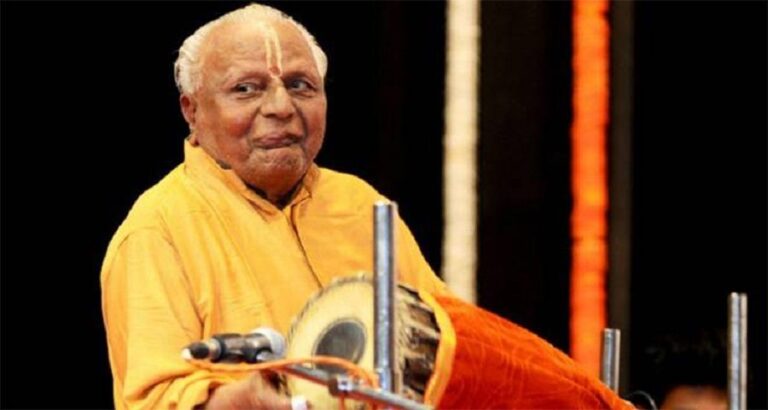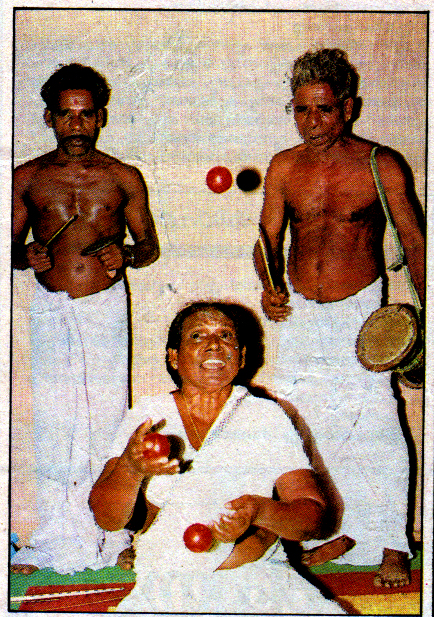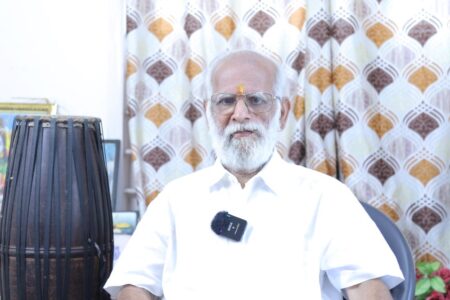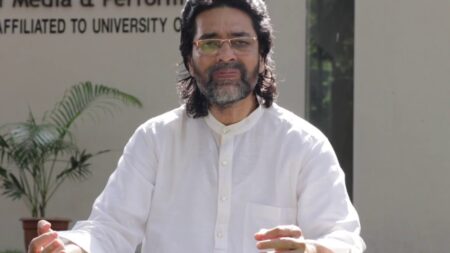Mridangam maestro T K Murthy, 96, recollecting his nine-decade-old percussion journey.
You come from a family of musicians. How did you start playing the mridangam?
I was born at Neyyattinkara in 1924. The place (25 km south of Thiruvananthapuram) was part of the Travancore kingdom those days. Ours was a family of court musicians. I belong to their fifth generation. Composer Neelakandan Sivan is my mother’s uncle.
When I was six years old, I pestered my mother to get me a mridangam. She bought one for three rupees. Nobody taught me the instrument at that time. I started to play on my own. When I was in school, we were in Thiruvananthapuram. I had a friend Chellamani (ghazal exponent Hariharan’s father Anantha Subramani Iyer) who used to sing. One day, Chithira Tirunal Maharaja was visiting our school and our headmaster told us to perform a concert. We didn’t have any clue. For, we hadn’t learned music formally. Anyway, Chellamani sang and I played the mridangam. The king was very impressed and presented us a gold medal.
When did you start formal learning?
My father Thanu Bhagavathar was a vocalist. He started taking me to his concerts. I was very small. At times, the organisers used to make me sit on top of a table for the audience to see me. Mridangam doyen Tanjavur Vaidyanatha Iyer happened to attend one such concert. He came to my father and told him that he was interested in teaching me and adopting me as a son. Thus I shifted base to my guru’s residence in Tanjavur at the age of nine and began learning under him. He is the founder of the Thanjavur style of mridangam. He made a perfect teaching format for learning the instrument. From then on, till his death, I stayed with my guru.
How were your gurukulam days?
My guru and his wife were very affectionate. They looked after me as their own son. During that time, Palakkad Mani Iyer and Thambuswami (brother of vocalist T M Thiagarajan) also were learning under Vaidyanatha Iyer. We all stayed at his residence. There was no particular time for teaching. He used to teach even at midnight and would sometimes wake us up at 4 am to resume the class.
My guru affectionately called me ‘sittu’. Because, as he said, my fingers would move vibrantly like that of the ‘sittu’kuruvi (sparrow). Later, I was known as chittu in the music circles. Top vocalists, including Semmangudi Srinivasa Iyer, called me by that name.
You used to accompany your guru to concerts. What are your memories?
When I was 10 years, I, along with my guru, went to Mysore Palace. It was Maharajapuram Vishwanatha Iyer’s concert. T Chowdiah was on the violin and my guru on the mridangam. I joined him. The Maharaja was so pleased with my performance that he gave me 1,000 rupees along with an angavastram. The next day, Maharaja Krishnaraja Wadiyar organised another concert for me to play the mridangam. On that day too, he gave me 1,000 rupees.
How strict was your guru?
Vaidyanatha Iyer was very affectionate at the same time strict. Once, when I was 13, he sent me to Kancheepuram to accompany a concert of Madurai Mani Iyer. In a sealed cover, he also gave a letter to the organiser. I didn’t know what was written inside. My guru asked the organiser to ask me to play simhanandanam tala (with 128 beats, the longest rhythmic cycle in the Carnatic system). And that if I made any mistake, I should not return to my guru. I went to a nearby Hanuman temple and sat there thinking about the kanakku. And prayed that if I didn’t get the kanakku in half an hour I will run away from here. I could play it correctly on that day. Besides me, only two mridangists — Palakkad Mani Iyer, Pazhani Subramaniam Pillai — have played the simhanandanam tala.
When and how did you become TK Murthy?
It was Palakkad Mani Iyer who trimmed my name to Murthy from Krishnamurthy. This was during a concert in Rasika Ranjani Sabha at Mylapore in Madras in 1937. I was 13 years old then. Musiri was the vocalist, accompanied by Papa Venkatarama Iyer on the violin and Mani Iyer on the kanjira. I was playing the mridangam. Till then I was T Krishnamurthy. The sabha came up with a poster in the shape of a clock. In the place of the numbers 12, 3, 6 and 9, they wrote each artists’ name. Krishnamurthy was not fitting in the space and Mani Iyer renamed me to T K Murthy. From then on, I am known by that name.
To be continued




